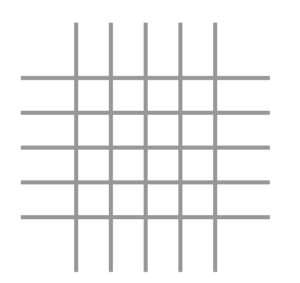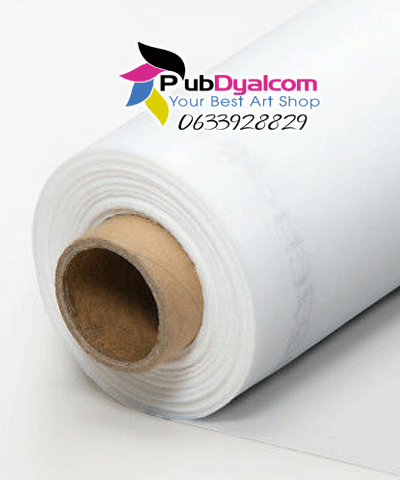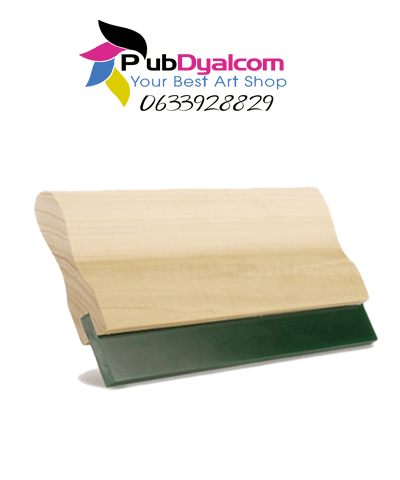Description
Silk screen printing mesh is a type of mesh fabric that is commonly used in the process of silk screen printing. It is made from a woven mesh of synthetic fibers such as polyester, nylon, or a blend of both. The mesh is stretched over a frame, and ink is forced through the mesh onto the surface being printed.
The mesh count of a silk screen printing mesh refers to the number of threads per inch in the mesh. The higher the mesh count, the finer the mesh and the smaller the holes in the mesh, which allows for more detail and a higher resolution print. However, a higher mesh count also requires more pressure to force the ink through the mesh and onto the substrate being printed on.
Silk screen printing mesh is available in a range of mesh counts to suit different types of printing applications. Lower mesh counts (80-110) are used for printing on heavy fabrics, while higher mesh counts (230-305) are used for printing on fine fabrics or for printing high-detail images.
When choosing a silk screen printing mesh, it is important to consider the type of ink being used, the type of substrate being printed on, and the level of detail required in the print.
Mesh guide chart:
Type of mesh Area of application
(43T) Textile printing with excellent coverage.
(55T) Textile printing with excellent coverage and definition.
(64T) Textile printing, paper, cardboard, nylon ect.
(90T) Print on paper, cardboard, nylon ect.
(120T) Print on PVC, vinyl, gadgets, glass, pens ecc..

Low mesh count
Low diameter
More ink deposited

High mesh count
High diameter
Less ink deposited
When looking at screens for screen printing you may notice different numbers for the same screen., the ‘T count’ refers to the number of threads per centimetre.
A quick note, mesh will either be yellow or white in colour. The difference here is that the yellow mesh absorbs more light compared to white mesh. It stops light scattering, therefore helping expose intricate details in designs.
A little reminder. Different mesh counts will hold different amounts of emulsion, this is due to the size difference in the holes and variation in thread thickness on coarser mesh counts. Therefore a lower mesh count will hold a higher amount of emulsion. But don’t worry, the difference isn’t extreme. You may just need to change up exposure times ever so slightly to allow for the amount of emulsion on the screen. More emulsion on the screen, means longer exposure times
Now, let’s discuss the differences in the most commonly used mesh counts.
32T
Low mesh count.
Useful for printing bold designs as it allows more ink to be pushed through the screen.
Used for specialist inks such as Glitter or Flakes (this allows the larger particles to be deposited on the substrate)
Most suited to paper printing, does NOT always give the best result on fabric
What ink can I use with 32Tmesh?
Specialty inks
White plastisol
Low bleed
Poly inks
43T
The most commonly used mesh
Ideal for printing bold/solid designs on fabric
Lay down a moderate deposit of ink
Perfect for printing an under base
Use with either waterbased or plastisol ink
What ink can I use with 43Tmesh?
Specialty inks
Standard plastisol
White plastisol
Low bleed
Poly inks
Glow in the dark
Standard Waterbased
Hybrid Wasterbased
55T
Perfect for printing on fabric when a little more detail is required
What ink can I use with 55T mesh?
Specialty inks
Standard plastisol
White plastisol
Low bleed
Poly inks
Glow in the dark
Hybrid Wasterbased
Discharge ink
62T
This is a medium mesh count
Good for printing a fine detail or halftone onto fabric.
Can be used when printing onto paper.
What ink can I use with 62Tmesh?
Standard plastisol
Standard waterbased
White plastisol
Low bleed
Poly inks
Glow in the dark
Hybrid Wasterbased
Discharge ink
77T
Fantastic for finer detail
Good for printing on lightweight garments
Still good for printing on paper and card
What ink can I use with 77Tmesh?
Standard plastisol
Standard waterbased
White plastisol
Low bleed
Poly inks
Glow in the dark
Hybrid Wasterbased
Discharge ink
90T
The most common mesh used for printing higher detailed designs
Great for top layer prints, leaving behind a thinner coat of ink
Use for both fabric and paper printing
Use when printing on delicate fabrics
Used for when you need a soft hand feel
Great when printing discharge inks
What ink can I use with 90Tmesh?
Standard plastisol
Standard waterbased
White plastisol
Poly inks
Hybrid Waterbased
Solvent Based Graphic Inks
120T
The ultimate for printing finer details
Use for printing halftones and small-sized text
More control over the ink deposit
Mainly used for graphic printing
What ink can I use with 120T?
Standard plastisol
Solvent Based Graphic Inks
Now you know what screen mesh you need for the job, head to our online shop to purchase.







Reviews
There are no reviews yet.